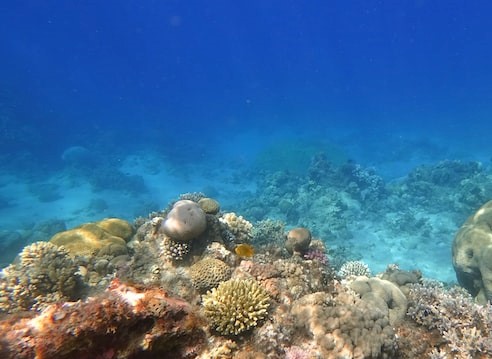Oceanography and Sea Life
Selin Poulsen

The Ocean
About 71 percent of the surface of the Earth is covered by the ocean, a vast body of saltwater. Oceanographers and nations around the world have traditionally classified the planet's ocean into four separate regions: the Pacific, Atlantic, Indian, and Arctic oceans. Oceanographers began referring to the waters surrounding Antarctica as the Southern Ocean in the 20th century. The weather, the temperature, and the availability of food for people and other animals are all significantly influenced by the ocean as a result. Humans have never charted, explored, or even seen more than 80% of the ocean. Compared to our own ocean floor, a much larger portion of the moon's and Mars' surfaces have been mapped and analyzed.
Marine Mammals
Although marine mammals share many traits with other mammals, they have evolved to spend all or a portion of their lives in the ocean. To help them swim faster, many have streamlined bodies. Most marine mammals rely on a thick coating of blubber (or fat) to stay warm in the water, although some, like fur seals and sea otters, rely on their thick fur coats. Many types of marine mammals can submerge for extended periods of time, yet they need to surface to breathe. They store extra oxygen in their muscles and blood to enable them to remain submerged for extended periods of time. They can restrict blood flow to only their important organs (such their heart and lungs) and can slow down their heartbeat so they are using less oxygen during a dive. They also have more blood relative to their body proportions than terrestrial mammals.



Oceanography
The study of the physical, chemical, and biological characteristics of the ocean, as well as the ocean's ancient past, present state, and potential future, is known as oceanography. The function of oceanographers may be more crucial than ever in an era when the ocean is endangered by climate change and pollution, coastlines are crumbling, and entire species of marine life are at risk of extinction. In fact, biological oceanography is currently one of the most important subfields in oceanography. It is the study of the organisms that live in the ocean and how they interact with it. However, oceanography is more than just academic inquiry. It also entails making informed decisions regarding policies that influence ocean health with the aid of that knowledge to guide decision-makers. Oceanographic knowledge has an impact on how people use the sea for transportation, food, energy, water, and a variety of other purposes. For instance, in order to better understand how contaminants are lowering fish populations and creating health hazards to those who consume the fish, fishermen with the Northwest Atlantic Marine Alliance (NAMA) are collaborating with oceanographers. NAMA and ocean experts intend to utilize their research to demonstrate the necessity of more stringent pollution limits.
